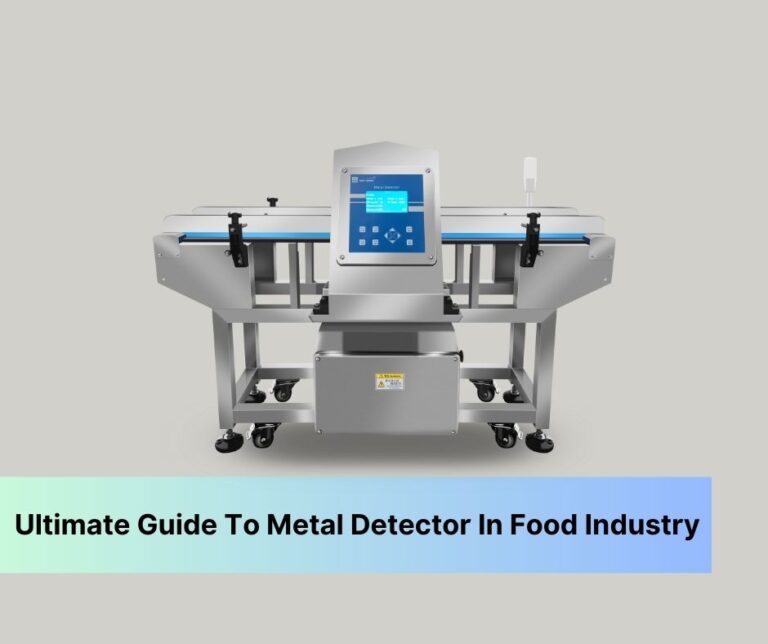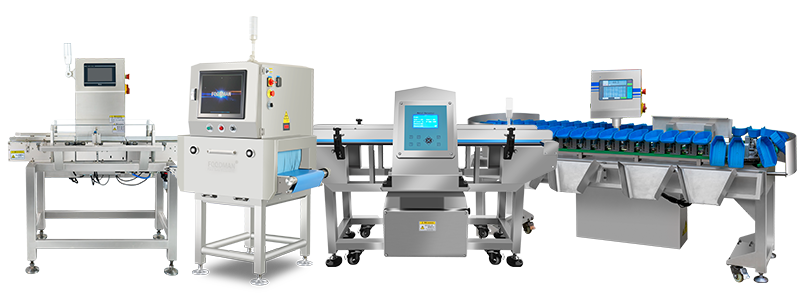Introduction
Welcome to our guide on how metal detectors ensure safety and quality in the food industry. This article provides a comprehensive overview of metal detection and its critical role in maintaining food safety.
Incorporating metal detection into food production procedures is essential, and we will provide you with the information you need to do so. Our guide covers everything from the basics of metal detectors to future trends and cost-benefit analyses.
I. Introduction to Metal Detectors in Food Industry
Importance of Metal Detection
The process of procuring food is essential for the food industry and cannot be considered optional. Manufacturers must prioritize consumer health and maintain quality standards to prevent contamination hazards.
Food metal detectors play a crucial role in identifying and eliminating any metal fragments that could pose a threat to the safety of food products, ensuring that food is safe for consumption.
Ensuring Food Safety and Quality
The food industry thrives on consumer trust, and ensuring food safety is a cornerstone of that trust.
By using metal detectors, manufacturers can maintain the integrity of their products, guaranteeing that they are free from harmful metal contaminants.
This commitment to quality resonates with consumers and contributes to the industry’s credibility.
II. Basics of Metal Detection
How Metal Detectors Work
Metal detectors, whether intended for food or not, work through electromagnetic induction. These versatile devices are engineered to detect the presence of metallic contaminants within various products. When a product passes through the metal detector, it encounters an electromagnetic field generated by the device.
When a food metal detector is used, metal particles in the product disturb the electromagnetic field’s balance. If there is a metal contaminant, it triggers an alarm or alert. These detectors can detect various types of metals, including ferrous, non-ferrous, and stainless steel, providing comprehensive detection capabilities.
Types of Metals Detected
Metal detectors can detect a variety of metals, whether they are ferrous or non-ferrous. This includes metals like stainless steel, aluminum, and brass, making them versatile. This feature ensures that you won’t miss any metal impurities, regardless of their composition.
Sensitivity Levels and Detection Capabilities
Customizing metal detection is vital, particularly in the food industry. Manufacturers can modify the sensitivity levels of metal detectors for food, enabling them to detect specific product requirements accurately. This flexibility ensures precise detection while minimizing the risk of false alarms.
III. Regulations and Standards
FDA and International Guidelines
Regulatory bodies, including the FDA and global organizations, have established rigorous guidelines to ensure food safety.
Metal detection is a fundamental aspect of these guidelines, highlighting its significance in maintaining high quality and safety standards.
Compliance Requirements for Food Manufacturers
For food manufacturers, compliance with these regulations is a legal obligation and a commitment to delivering safe products.
Implementing metal detection processes demonstrates the industry’s proactive approach to preventing potential health risks and legal consequences.
HACCP and Metal Detection
Hazard Analysis Critical Control Points (HACCP) systems and metal detection go hand in hand. Metal detection is an integral component of HACCP programs, reinforcing their effectiveness in ensuring food safety.
Collaborative Efforts for Food Safety
Collaboration between manufacturers, regulators, and technology providers is crucial in reinforcing the food industry’s dedication to safety. Through these partnerships, innovation is encouraged, and the entire industry is elevated.
IV. Types of Metal Detectors
Conveyor metal detectors find metal in food and materials on a conveyor belt, which is suitable for food processing industries.
Conveyor metal detectors are essential for food safety. They stop metal from getting into food, improving quality and reducing recalls.
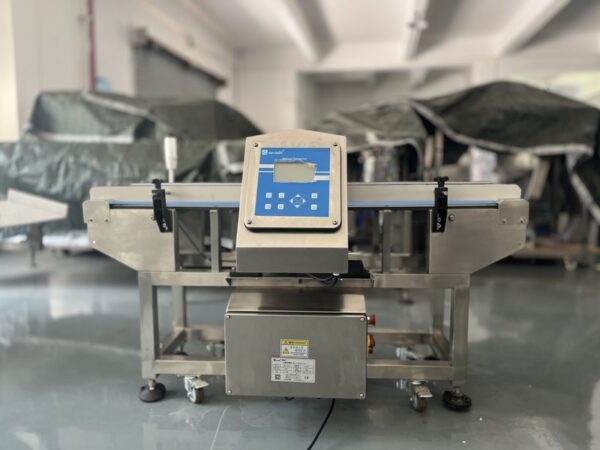
The Combi Metal Detector and Checkweigher is a useful device that examines products on production lines to detect metal and verify the weight. It can identify metallic impurities and evaluate the weight of items, ensuring that packages meet the necessary weight standards.
In the food industry, this tool provides an effective and convenient solution for quality control. It helps save space, minimizes disruptions in production lines, and produces safe, precise, and high-quality food products.
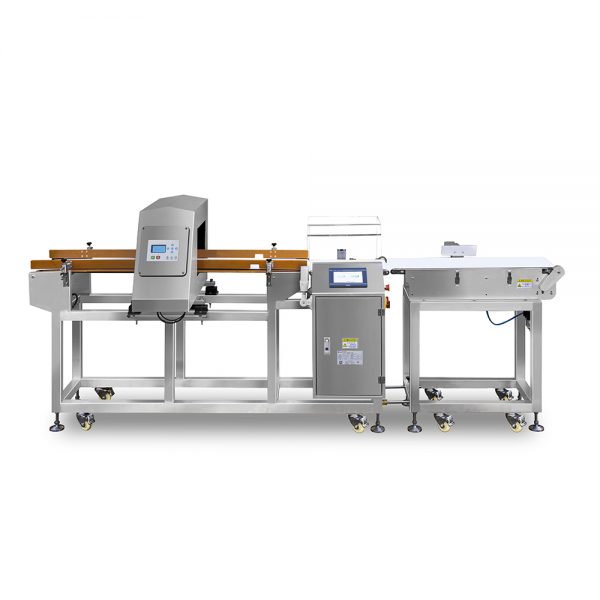
Gold Metal Detector
Gold metal detectors are specialized devices that locate gold hidden in the ground or other environments. They use advanced technologies to sense soil variations and can differentiate between different types of metals, making them highly accurate.
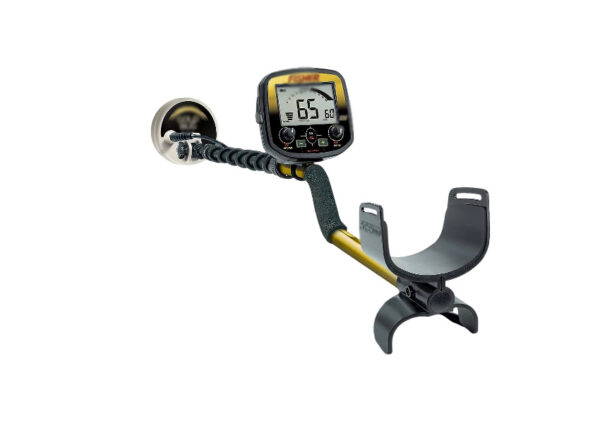
V. Integration into Food Production
In-line Metal Detection Process
In food production, integration is crucial, and the metal detector for food is an essential addition to the production line.
Each product undergoes a thorough inspection to identify and remove metal contaminants, ensuring that only safe and high-quality products are delivered to consumers.
Effect on Production Line Speed
Despite concerns, metal detectors do not significantly impede production lines. They are made to work well in fast production areas, keeping production speed going without any interruptions.
Preventing Contamination and Recalls
Swift detection and elimination of metal contaminants significantly reduce the risk of contaminated products reaching consumers.
By avoiding costly recalls, manufacturers protect consumers and their brand reputation.
VI. Benefits of Using Metal Detectors
Improving Consumer Safety
Metal detection is crucial in ensuring consumer safety. Manufacturers can gain the trust of their customers by guaranteeing that their products are free from metal contaminants. This results in loyal customers who are confident in their purchases.
Safeguarding Brand Reputation
One incident of metal contamination can tarnish a brand’s reputation. Metal detectors act as a shield, safeguarding brands from the potential fallout of such incidents and demonstrating their commitment to quality.
Reducing Product Waste
Food metal detectors have a positive impact beyond safety. Manufacturers reduce waste and optimize their resources by identifying and removing contaminated items early in production.
ROI of Metal Detection Implementation
Investing in metal detection technology offers substantial returns in terms of consumer safety, brand reputation, and regulatory compliance. The cost of implementation pales compared to the potential losses from contamination incidents.
Comparing Costs to Potential Losses
The value proposition becomes evident when weighing the costs of implementing metal detection against the potential financial losses from contamination incidents.
VII. Challenges and Limitations
False Positives and Negatives
While highly effective, metal detectors can sometimes produce false alarms (false positives) or miss specific contaminants (false negatives).
Striking the right balance between sensitivity and accuracy minimizes these occurrences.
Effect of Product Characteristics
Metal detection accuracy can be affected by variations in the size, shape, and physical properties of products. Therefore, manufacturers have to consider these factors during calibration to ensure accurate detection. Regular maintenance and calibration are essential to avoid any issues.
Maintenance and Calibration Issues
Regular maintenance and calibration are essential to ensure consistent performance.
Neglecting these tasks can lead to compromised detection capabilities, potentially resulting in undetected contaminants.
VIII. Selecting the Right Metal Detector
Consideration Factors
Choosing the appropriate metal detector involves evaluating product type, packaging, production environment, and regulatory requirements. A well-informed decision ensures optimal performance.
Matching Detector to Product and Facility
When it comes to food metal detectors, there is no universal solution. Manufacturers need to choose a sensor that suits the specific qualities of their products and the distinctive features of their production site.
X-ray Inspection vs. Metal Detector
Both X-ray inspection and metal detectors are effective in their own right.
X-ray inspection system excels in identifying non-metallic contaminants, while metal detector specializes in detecting foreign metal objects.
IX. Installation and Calibration
Proper Positioning of Metal Detectors
Strategic placement of metal detectors within the production line is critical for effective detection. Proper positioning enhances the detector’s ability to identify contaminants accurately.
Setting Sensitivity Levels
Calibrating detectors to the proper sensitivity levels for specific products is essential. This ensures precise detection while minimizing false alarms, balancing accuracy and efficiency.
Regular Calibration Procedures
Scheduled calibration is vital for maintaining consistent performance.
Regular checks not only ensure ongoing accuracy but also allow for the prompt resolution of any arising issues.
X. Training and Implementation
Operator Training and Best Practices
The effectiveness of metal detection relies on trained operators familiar with the technology. Comprehensive training empowers operators to respond accurately to alerts and ensure proper system operation.
Integrating Metal Detection into Quality Control
Integrating metal detection into quality control processes enhances the quality assurance of food products and reduces the possibility of contamination. This process is seamless and efficient.
XI. Future Trends in Metal Detection
Advancements in Technology
The advancement of technology continues to enhance the capabilities of metal detection. These improvements result in better detection precision, fewer false alerts, and increased ease of use.
Integration with AI and Machine Learning
The fusion of metal detection technology with artificial intelligence and machine learning holds immense promise. With these advancements, food metal detectors can adjust to varying production settings and improve performance.
Conclusion
Metal detectors are more than machines; they control food safty and quality. The manufacturers must balance their role in an industry where consumer trust is paramount.
Manufacturers safeguard consumer health and brand reputation by proactively implementing metal detection processes. The future holds exciting advancements in metal detection technology, promising even higher levels of accuracy and efficiency. So, embrace the power of metal detectors and ensure that every bite of food is a bite of safety and quality.
Frequently Asked Questions (FAQs)
How do metal detectors identify contaminants?
Metal detectors work based on electromagnetic principles. When a metal contaminant passes through the detector’s electromagnetic field, it disrupts its equilibrium, triggering an alert.
Can metal detectors detect non-metallic contaminants?
Metal detectors only detect metal contaminants and cannot identify other impurities. X-ray inspection is the preferred method for detecting non-metallic impurities.
What advantages do conveyor metal detectors offer?
Metal detectors can be seamlessly integrated into conveyor production lines, ensuring non-intrusive metal detection without disrupting manufacturing.
Are metal detectors adaptable to different packaging types?
Metal detectors can detect all types of packaging to ensure a thorough detection process. They adjust to different packaging formats to avoid missing anything.

